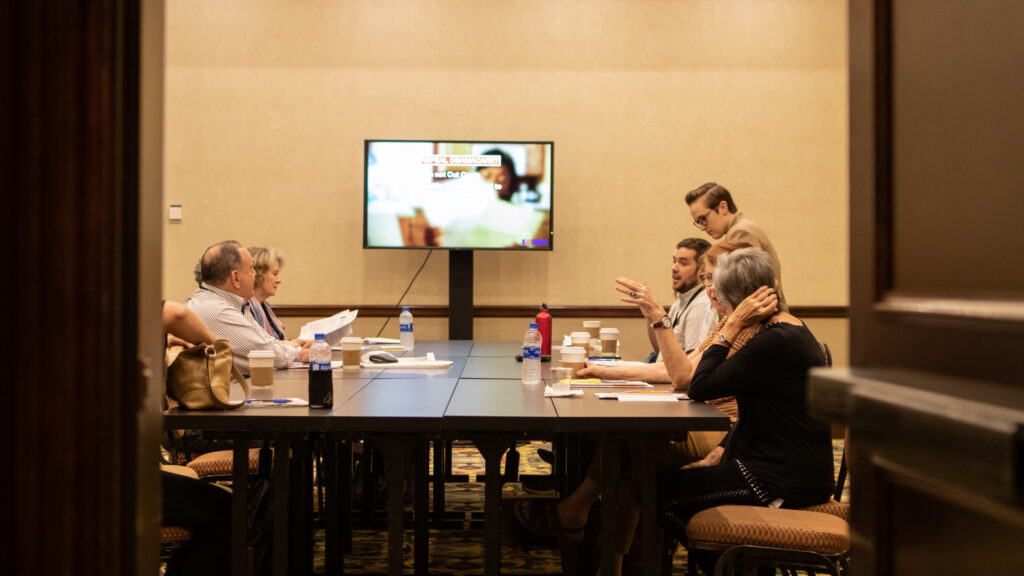A year ago, over 500 voters from a variety of walks of life and political persuasions got together in one room to talk politics for the Stanford Center for Deliberative Democracy event, “America in One Room.”
How did they vote?

A year ago, over 500 voters from a variety of walks of life and political persuasions got together in one room for Stanford’s Center for Deliberative Democracy, nonpartisan institution Helena and By the People Productions event “America in One Room.”
Now, the center that ran the study has released data from a follow-up study conducted a year after the discussions—and they say the event’s impacts are still being felt by participants.
The event, which was held in Dallas over the course of four days, was designed to promote civil conversations between people of different political viewpoints. Participants discussed topics such as health care, immigration, the economy, the environment and foreign policy. Participants also had town-hall style discussions with presidential candidates.
The weekend of debate caused a noticeable shifting on topics among participants—for example, support for the repeal of the Affordable Care Act dropped from 35 to 25 percent over the course of the weekend, a drop that could be attributed to a vast decrease in support from Republican participants.
In the follow-up study, participants reported being largely disillusioned with the current political climate. They were more likely to be disappointed in the government’s coronavirus response, in terms of both public health and economic response.
But most strikingly, survey respondents who had participated in the event were overall more likely to vote for Biden than the control group. (Samples for the follow-up study match up well, if not perfectly, with samples from the original study.)
Biden’s edge among the group comes from voters who self-described as either “independent” or just “leaning” towards one party. These voters, who had placed themselves in the middle of the political spectrum, were more likely to lean towards Biden than Trump—by some 25 points.
“His rhetoric of bringing people together, being the president for everybody—that’s what’s attracting me right now,” said Mike, a previously undecided voter who indicated he was leaning towards voting for Biden.
“At first it was the divisiveness in the language he [Trump] uses, the deconstruction of so many social programs that safeguard Americans. But the straw that broke the camel’s back would definitely be COVID,” said Nadia, another previously undecided voter who indicated that she would be voting for Biden.
The experiment is a practice in what the Stanford institute terms “deliberative polling”—a model which attempts to address the problem of the lack of public awareness around key issues. In deliberative polling, the polling sample is provided with “carefully balanced briefing materials,” and given opportunities for deep informative discussions with experts, candidates, as well as moderated dialogues with other participants. In doing so, the “deliberative polling” approach intends to represent the changes of opinion and results that the public would show if given the opportunity to be more informed and engaged with the issues.
In a time when political decisions often made based on information provided by social media platforms rife with disinformation and out-of-context statistics, the “America in One Room” experiment, and the premise of deliberative polling, offers up a new model for discussing politics in the U.S.
You may also like:





